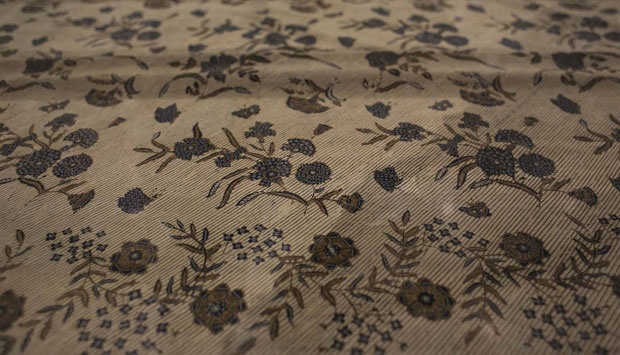
Questions arise when reading the journal of Nicolaus Adriani, a linguist sent by the Netherland Bible Society in 1884 to learn the Toraja language in Central Sulawesi. In his diary dated "Depok, September 1900", he recorded his meeting with Kartini, Roekmini, and Kardinah in Batavia, daughters of Jepara Regent Raden Mas Adipati Ario Sosroningrat.
Adriani wrote that the three young ladies were dressed in similar attire: white silk kebaya with pink flowers, donning gold necklaces and wearing their hair up in a bun.
"All three wore beautiful hand-made batik sarongs in an alluring chocolate color," Adriani wrote as quoted by Pramoedya Ananta Toer in his book 'Just Call Me Kartini'.
As daughters of a Regent, the ladies learned how to make batik from the regency's batik makers. Kartini was touted as the person who introduced batik to the Netherlands. Her essay 'Handschrift Jepara', which detailed about batik and its manufacturing process, fascinated Queen Wilhelmina who read it at the Java booth at the National Exhibition of Women's Work in Den Haag in 1898.
Adriani, however, did not provide any information about the type of batik Kartini and her sisters were wearing..
Broadly speaking, the batik is divided into two: coastal batik, which came from cities on the north coast of Java, and Mataraman or Keratonan (palatial) batik, which came from Yogyakarta and Solo. Keratonan Batik are designed with repeated geometric motifs and dominated on the color of soga (brown). Meanwhile, coastal batik's motifs and colors are very diverse--as free as the people living far from the confines of the palace. Coastal batik often bears influences from Europe, Arab, and China, introduced by merchant and traders that passed through Java's ports.
Despite the fact that Jepara is located on the northern coast of Java, it can be ascertained that Kartini did not wear coastal batik. As a Regent's daughter, she was mandated to wear keratonan when making public appearances. Back in her days, batik served as an identity of one's social status. Specifics motive could only be worn by certain social classes. Nobles were allowed to wear batik keratonan. Looking at Kartini's pictures, she was always wearing batik with parang motif, something only nobles could adorn.
But surprisingly, the batik Kartini wrote in her essay was not keratonan. In the Kartini National Museum in Jakarta, the batik displayed bears the motif of carnation bouquets (buketan).
Flower arrangements are a typical patter found in the coastal batik. "The only thing that shows keratonan resemblance is the soga color," said Suyanti Jatmiko, manager of the Biyung Pralodo Society and Nalendra Batik Gallery in Jepara.
"Kartini combined keratonan batik with coastal ones," said Suyanti, granddaughter of RA Soetjia--one Kartini's batik students. Kartini chose coastal style motifs such as flowers, leaves, birds, or butterflies. But for coloring, she chose to use typical keratonan's brown.
Since 2005, Suyanti had visited many museums, exhibits, and literature to find the roots of Jepara batik. Although she has yet to find a definitive answer, due to the lack of documentation, she believes that Kartini's batik is a "new style".
The reason behind Kartini's decision to combine the two batiks' characteristic remains unclear. It was touted that she intentionally did that as her way of "rebelling" against feudal culture. Nevertheless, some historians had said that the keratonan batik had some influence to the colors and motifs of coastal batik.
Edy Winarno, Chairman of the Indonesian Public Historian Society of Rembang, believes that the Mataraman batik was introduced to the people living in the coasts during the Diponegoro War (c. 1825-1830). At that time, Javanese nobles relocated to waterfront areas, including Rembang and Jepara.
"They also brought their wives who then spread the keratonan batik motifs and techniques," he said.
AGOENG WIJAYA | EDI FAISOL














